From Versailles to Your Backyard: Creating Stunning Parterre Gardens in Any Space
Dawn breaks over Versailles. Mist clings to the ground. Slowly, the sun reveals something magical. Geometric patterns emerge from the fog. Boxwood hedges form perfect diamonds and circles. Gravel paths cut clean lines between green squares.
You stop. You stare. Your breath catches.
But wait. You don’t need a palace to create this magic. You don’t need acres of land. Or a team of gardeners. Parterre gardens can work anywhere. Even in your small backyard.
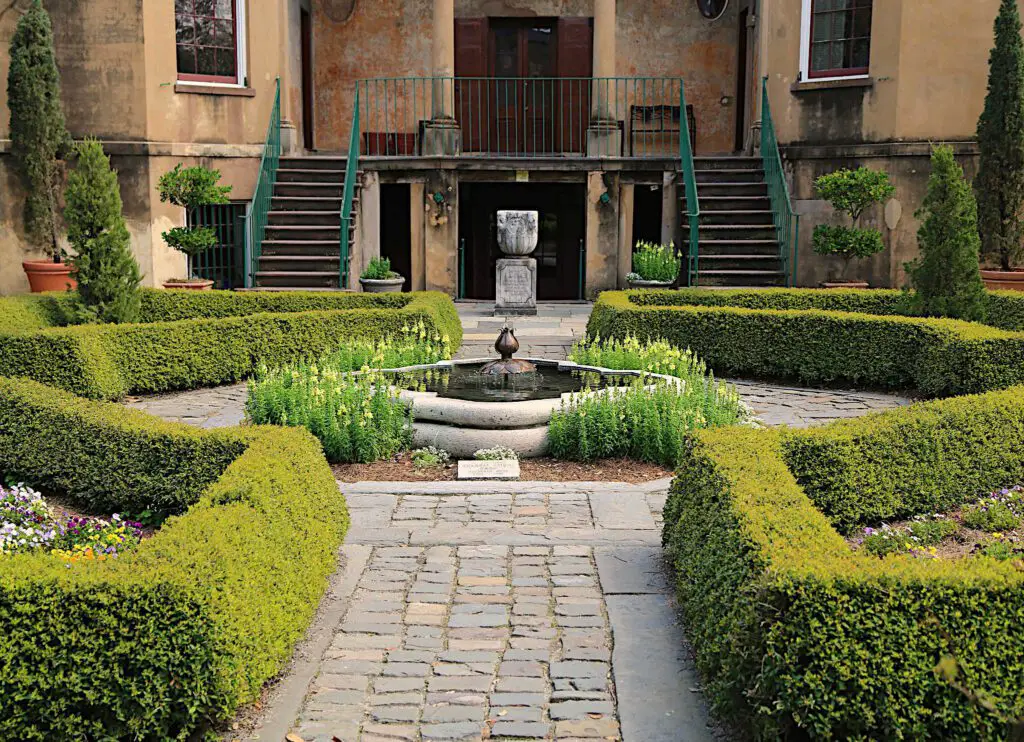
I’ve designed parterres for mansion grounds. And for tiny city courtyards. The principles stay the same. Order brings calm. Patterns create beauty. Structure makes even simple plants look elegant.
You might think formal gardens need perfect skills. Wrong. I’ve helped beginners create stunning designs using basic materials. Some used wooden boards instead of hedges. Others chose gravel patterns over complex plantings. All captured that parterre magic.
A parterre garden design starts with one simple idea. Nature and geometry can dance together. You control the steps. You choose the rhythm. And you don’t need royal gardeners to help.
Ready to transform your outdoor space? Let’s start with understanding what makes these gardens special. Then we’ll break down every element. Finally, I’ll show you shortcuts that work for real people with real budgets.
The Soul of the Parterre: Understanding Its Core Ethos
Parterre gardens began in Italy during the Renaissance. Wealthy families wanted to show their control over nature. They carved patterns into the landscape. Herbs and flowers filled geometric beds. Water features marked focal points.
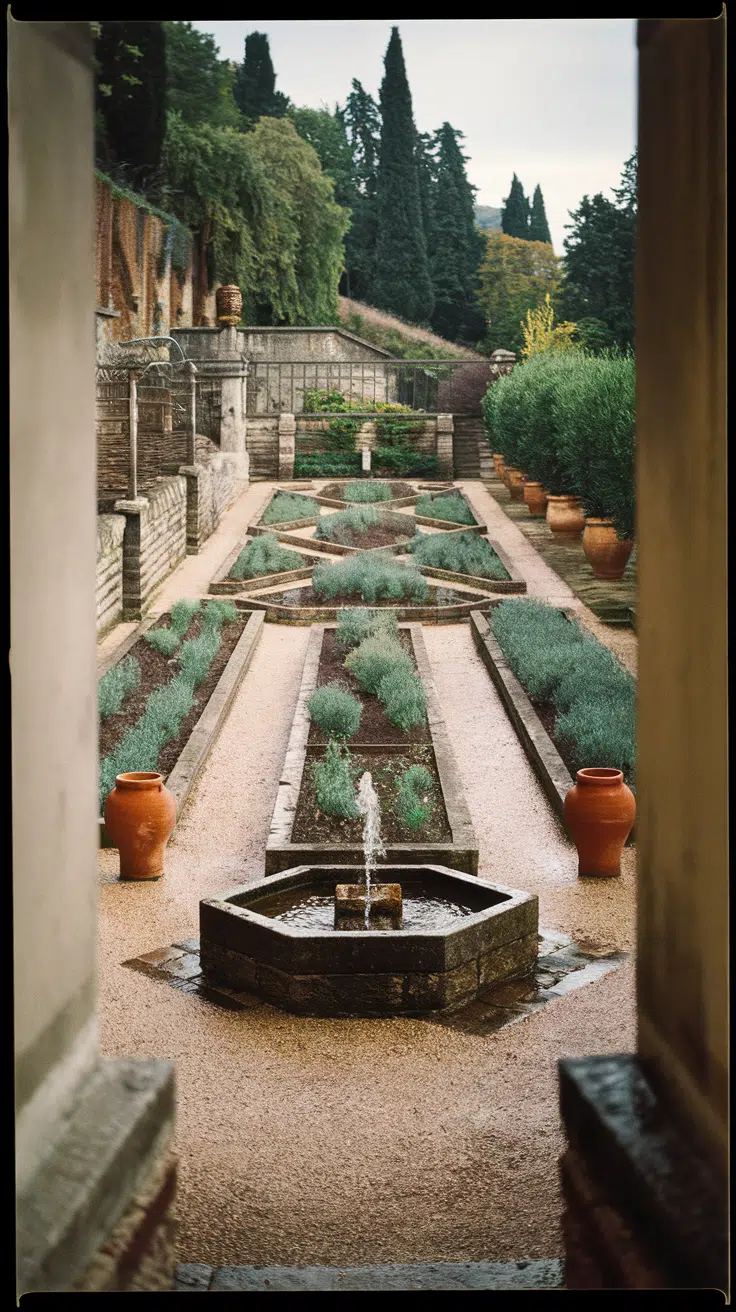
French gardeners took these ideas further. They made patterns more complex. They added colored gravel. They trimmed hedges into perfect shapes. André Le Nôtre designed the gardens at Versailles. His work defined formal garden style forever.
But why do we still love these designs? Our brains crave order. Symmetry feels peaceful. Repeated patterns calm our minds. A parterre garden layout gives us control in a chaotic world.
Modern parterres don’t copy old designs exactly. We adapt them. We use new materials. We choose easier plants. But we keep the core idea. Geometry creates beauty.
Think about your favorite public spaces. Many use parterre principles. City parks have formal rose gardens. Shopping centers use geometric planters. Even highway medians show pattern-based planting. We see order and feel better.
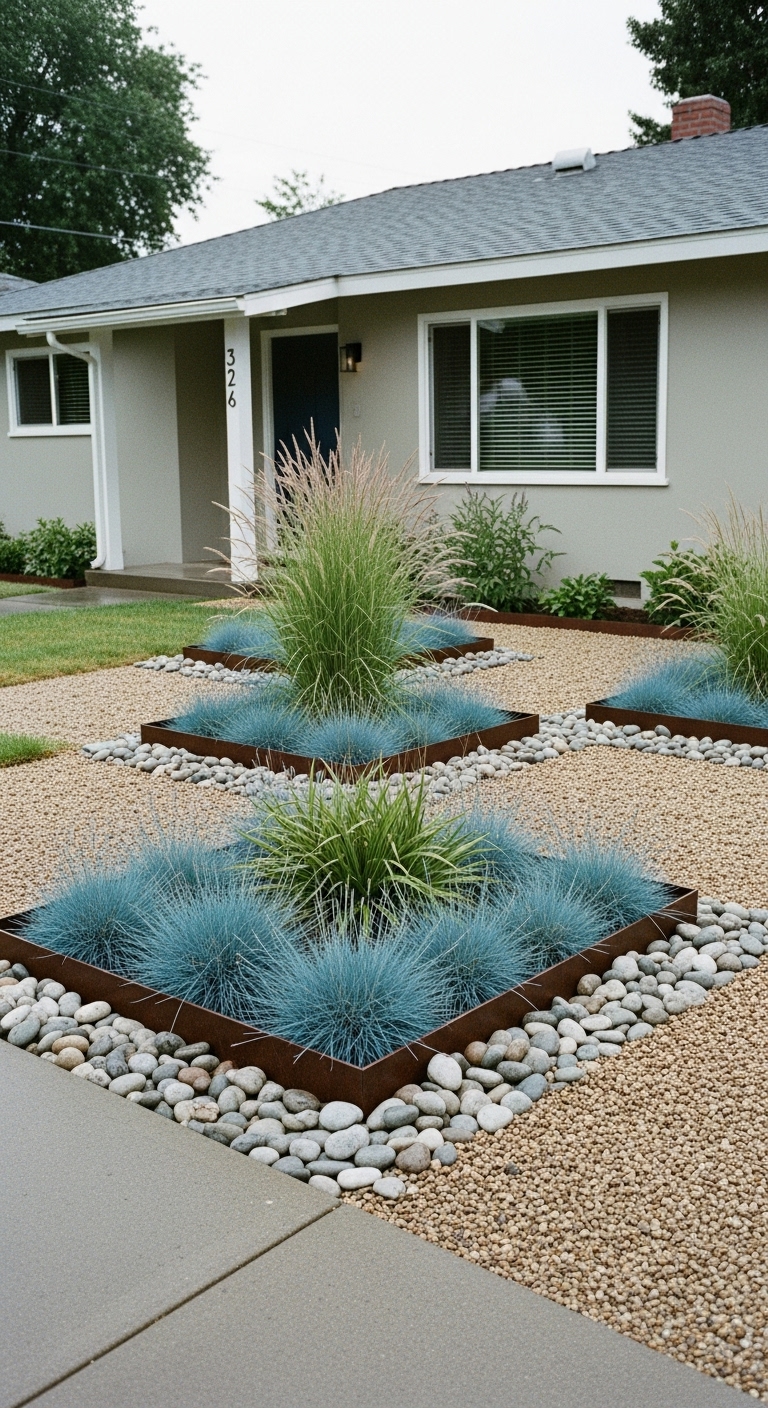
Your parterre can reflect your life. Love cooking? Plant herbs in geometric patterns. Prefer low maintenance? Use gravel and succulents. Want year-round color? Mix evergreens with seasonal flowers.
The philosophy stays constant. Create order from chaos. Find beauty in repetition. Let geometry guide your design.
Essential Elements: The Building Blocks of Parterre Design
Every parterre starts with geometry. Squares, circles, triangles, diamonds. These shapes form your foundation. They create the parterre garden plan that everything else follows.
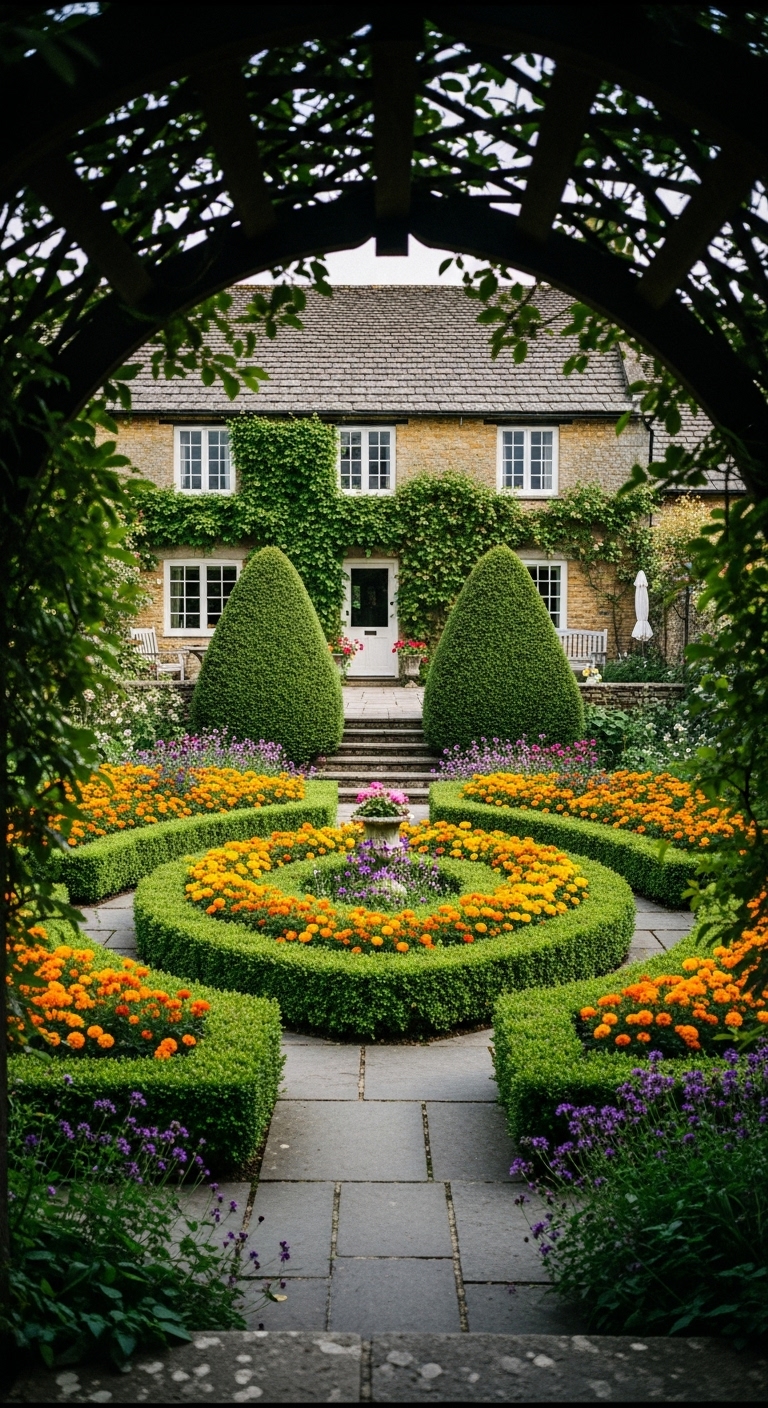
Symmetry matters most. What happens on the left mirrors the right. Balance creates harmony. But perfect symmetry isn’t always necessary. Near-symmetry works too. Just keep things visually balanced.
Boxwood parterre garden designs remain classics for good reasons. Boxwood stays green year-round. It tolerates heavy pruning. It grows slowly, reducing maintenance. Common varieties include ‘Green Velvet’ and ‘Winter Gem’. Both handle cold winters well.
But boxwood isn’t your only choice. Japanese holly works great. So does germander. Lavender creates scented borders. Even annual plants like dusty miller can edge beds for one season.
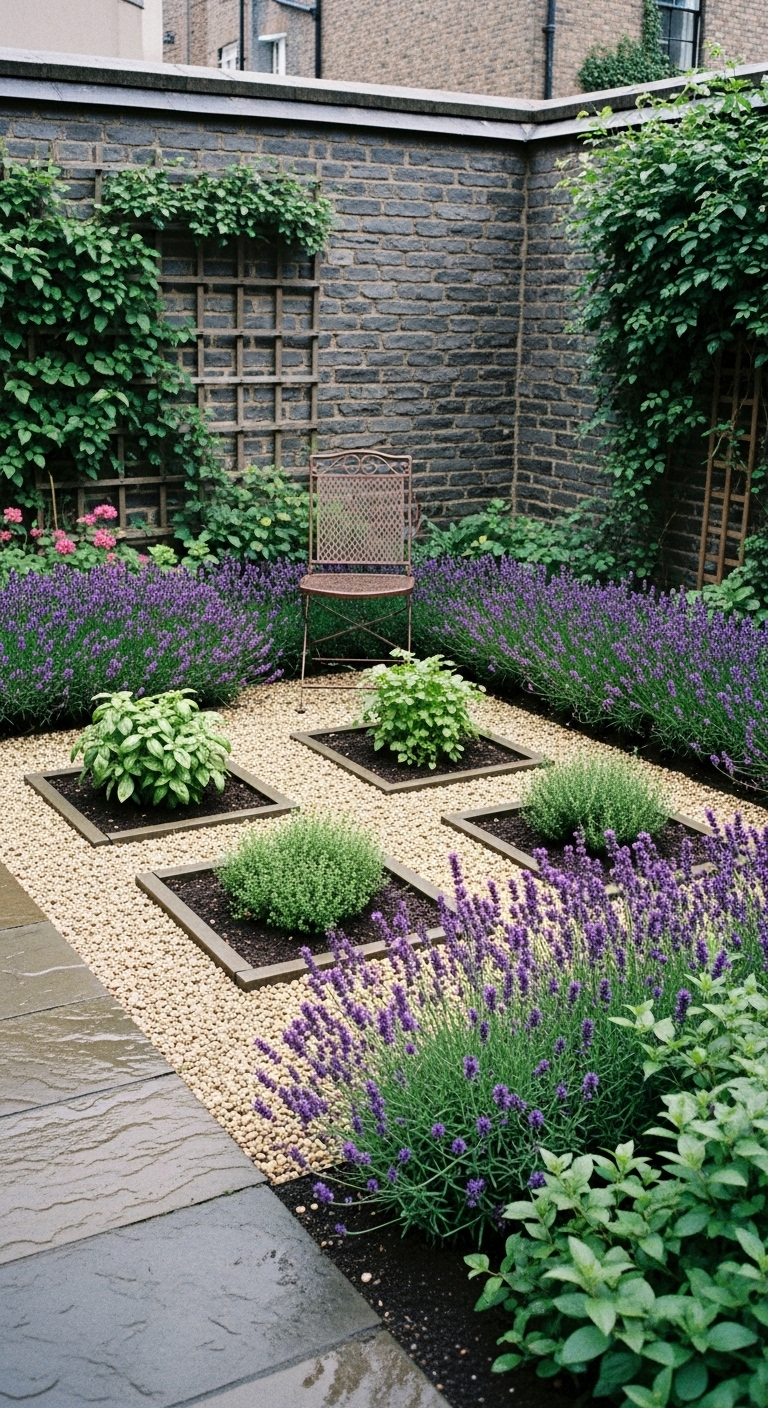
Topiary adds vertical interest. Start simple. Clip shrubs into balls or cones. Graduate to spirals later. Or skip topiary completely. Ornamental grasses provide height without pruning.
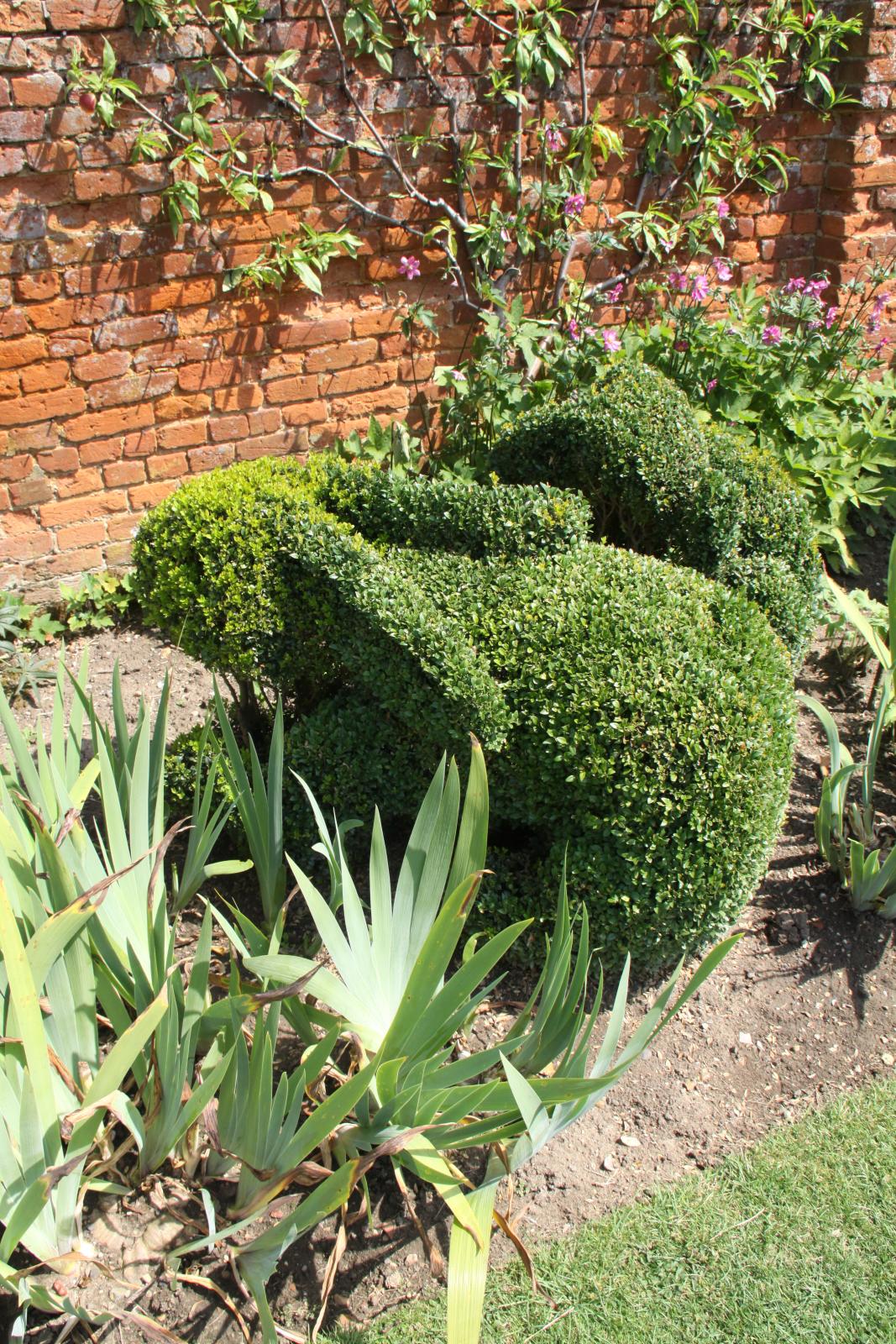
Flower beds bring color to your design. Traditional parterres used single colors per bed. Red here. White there. Blue beyond. Modern designs mix more freely. Just keep color schemes simple. Too many colors destroy the formal feeling.
Statues and ornaments serve as focal points. A single urn works perfectly. So does a birdbath. Or a simple sphere on a pedestal. Place focal points where paths meet. Or at the design’s center.
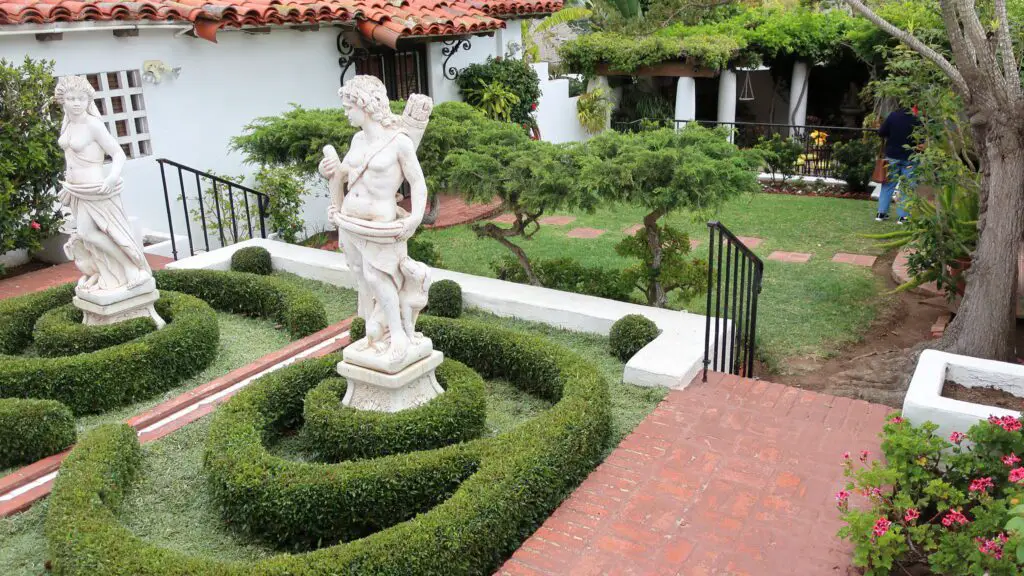
Paths define your pattern. Gravel remains the classic choice. But mulch works. So does decomposed granite. Even lawn can separate beds. Just keep paths consistent throughout your design.
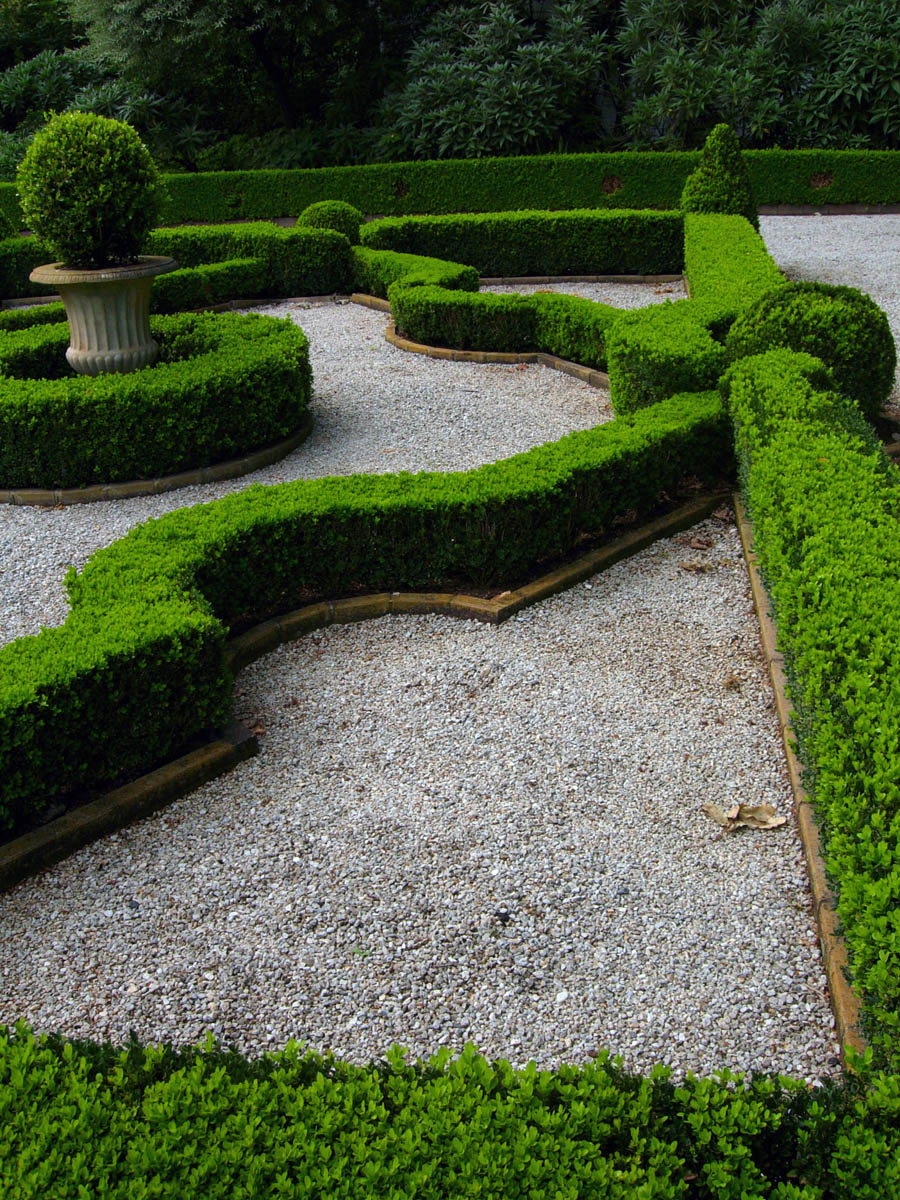
Negative space matters as much as planted areas. Empty gravel squares rest the eye. Open lawn provides breathing room. Don’t fill every inch. Let the pattern breathe.
Water features add movement and sound. A small fountain works wonders. Even a reflecting bowl creates interest. Place water where it draws attention to your design’s best features.
Translating Grandeur: Parterre Garden Ideas for Residential Spaces
Your front yard begs for structure. Most suburban lawns look the same. Green grass. Maybe a tree. Perhaps some foundation shrubs. But a parterre garden front yard changes everything. Suddenly, your home stands out. Neighbors slow down to look. Delivery drivers compliment your design.
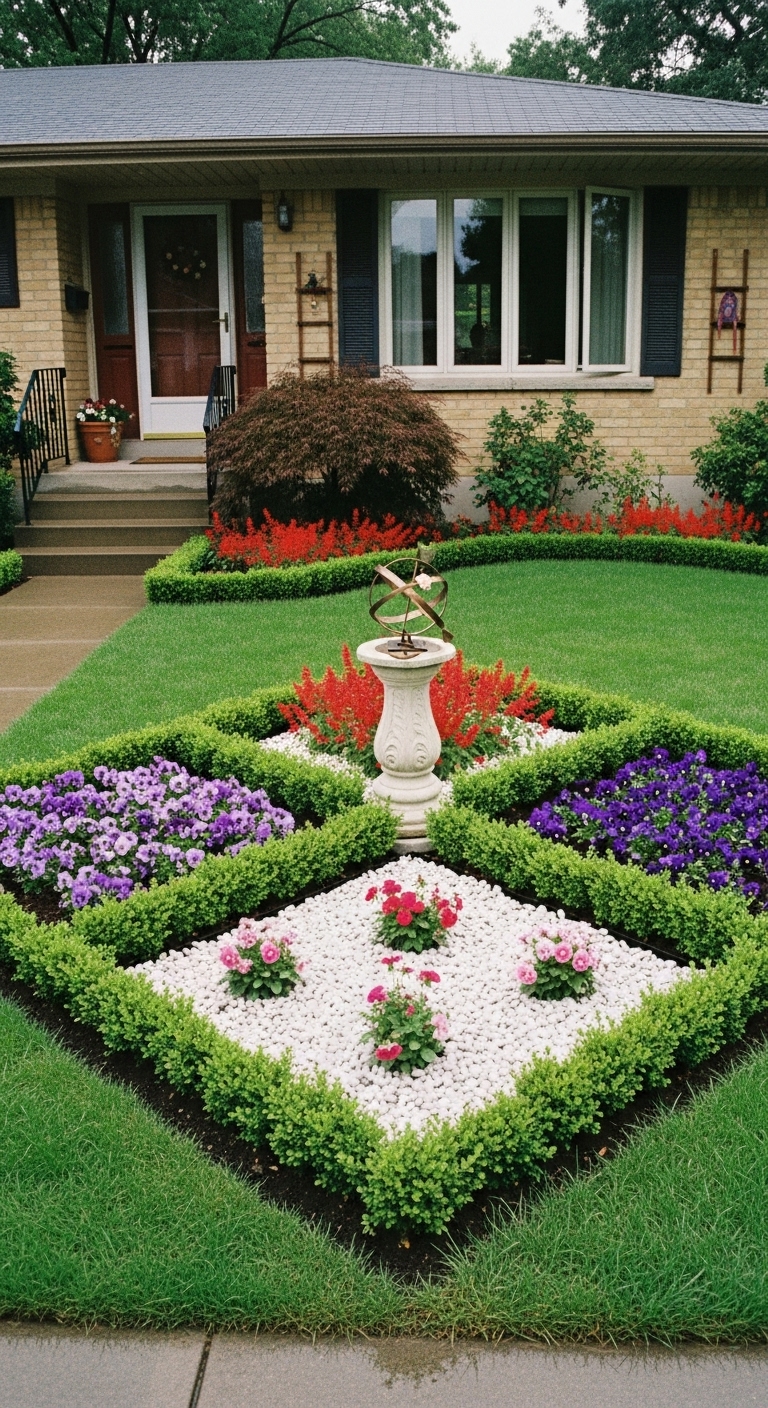
Start small if you’re nervous. Create one geometric bed near your front door. Edge it with bricks or metal. Plant something simple inside. Add another bed next year. Build your parterre over time.
Backyard parterre garden designs work differently. Here, you entertain. You relax. You need spaces for furniture and movement. Design around function first. Let beauty follow.
Consider a parterre that frames your patio. Geometric beds can surround seating areas. Or create a formal garden view from your back windows. Mix herbs with flowers for gardens you can harvest. Add lighting to enjoy patterns after dark.
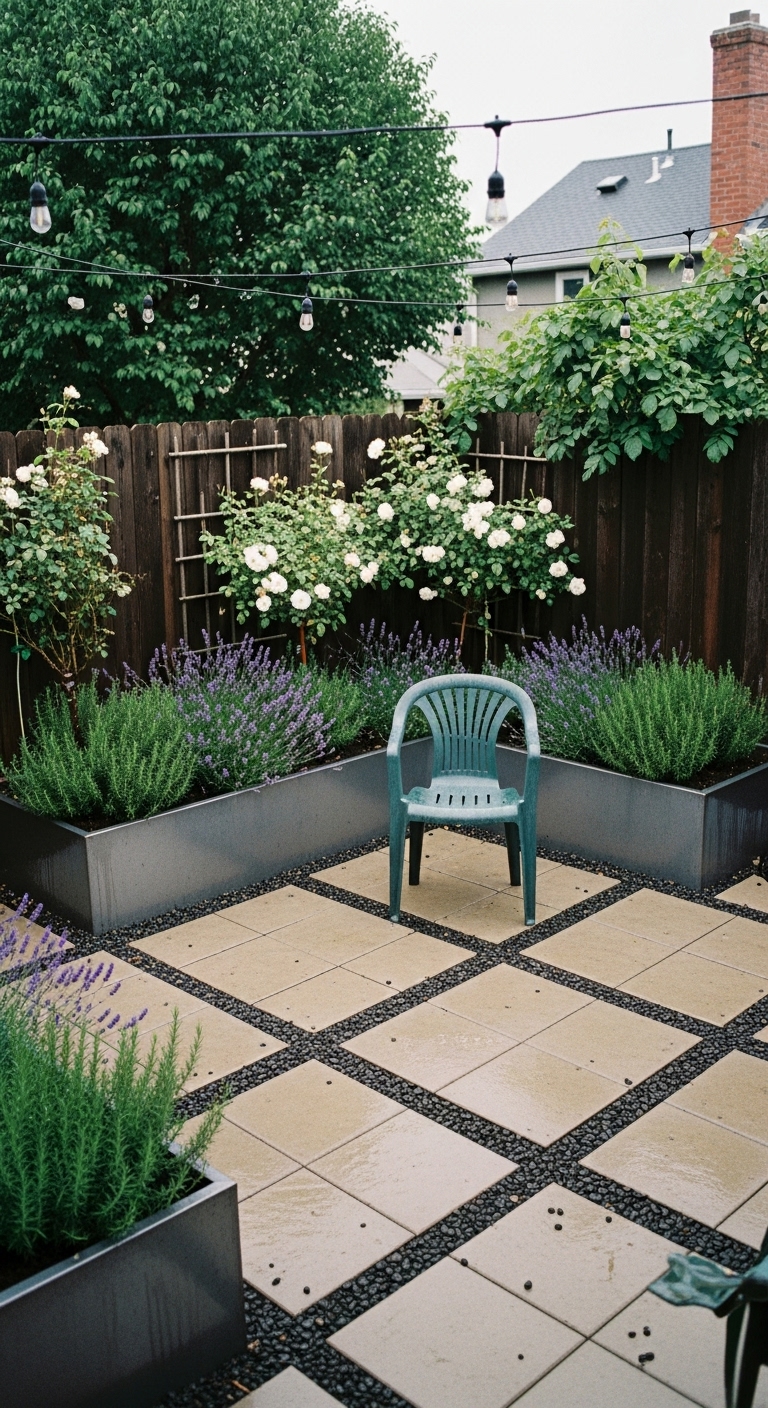
Courtyards love parterre designs. Walls already frame your space. You just add pattern within. Parterre garden design courtyards often use just two or three elements. Simple works best in tight spaces.
Try a cross pattern for courtyards. Four beds meet at a central point. Put a pot or sculpture there. Use the same plant throughout for unity. Or alternate two plants for subtle variety.
Small parterre garden design requires careful planning. Every inch counts. Choose dwarf plants. Make paths narrow but functional. Use vertical elements sparingly. One tall feature often suffices.
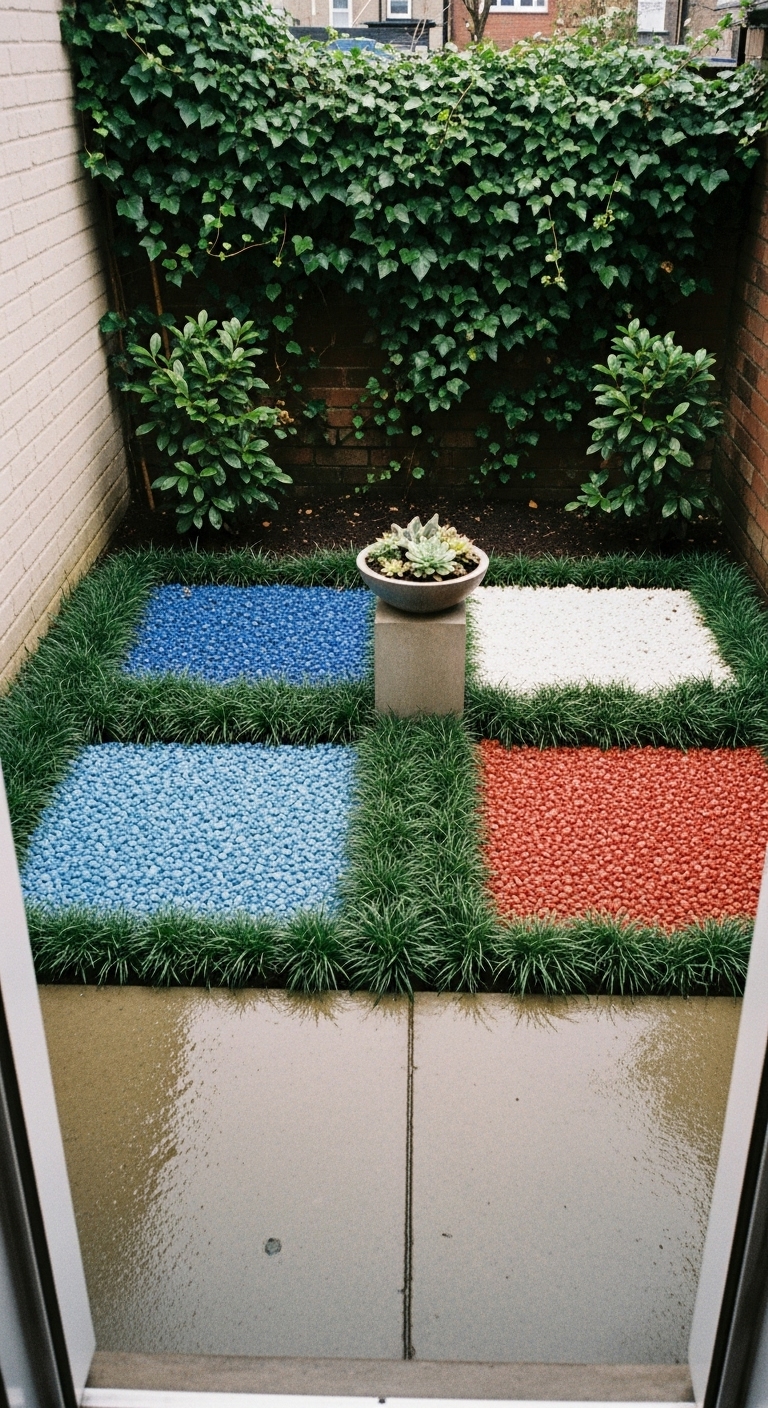
Mini parterre garden ideas work anywhere. Window boxes can show geometric patterns. Use small succulents or herbs. Divide the box into sections with wood strips. Fill sections alternately with plants and colored stones.
Container gardens follow parterre principles too. Group matching pots in geometric arrangements. Plant them identically. Or alternate two plant types. Place pots on gravel or pavers to complete the formal look.
Contemporary parterre garden designs break some rules. They might use asymmetry deliberately. Or mix materials unexpectedly. Cor-ten steel edges meet concrete pavers. Ornamental grasses replace traditional flowers. LED strips highlight patterns at night.
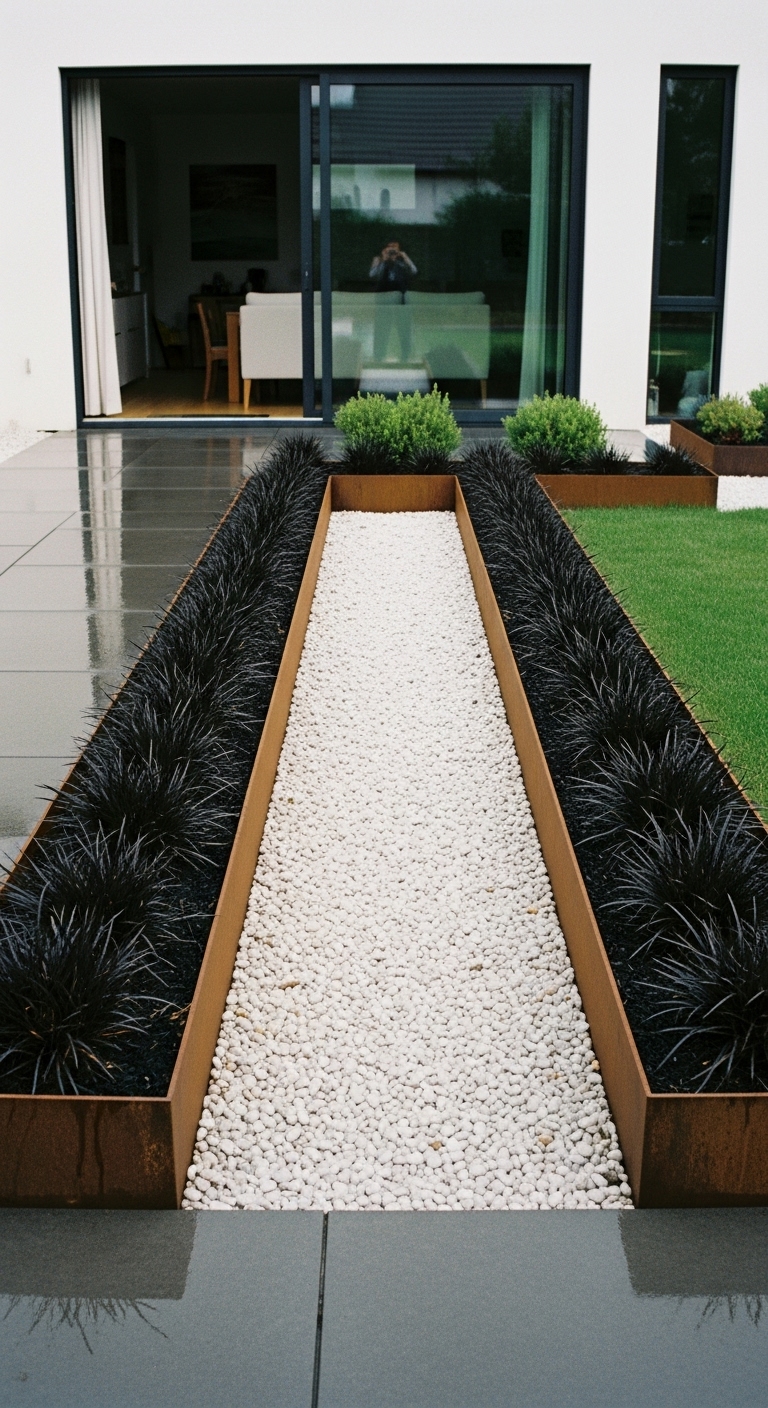
Modern materials offer new possibilities. Recycled glass replaces gravel. Rubber mulch comes in many colors. Composite lumber won’t rot like wood. Metal edging stays straight forever.
But modern doesn’t mean complicated. Simple parterre garden designs often work best. Two squares. One circle. A single cross. Start basic and add complexity only if needed.
Think about maintenance from the start. Tight, complex patterns need more care. Wider spacing forgives some neglect. Choose your commitment level honestly.
The No-Green-Thumb Guide: Accessible Alternatives
Not everyone clips hedges perfectly. Some of us kill plants just by looking at them. Good news. You can still create parterre magic. Let me show you how.
Wooden structures give instant geometry. Build raised beds from 2×6 lumber. Paint them white or leave them natural. Arrange four squares around a center point. Fill with easy plants or just colored mulch. Your parterre garden ideas become reality in one weekend.
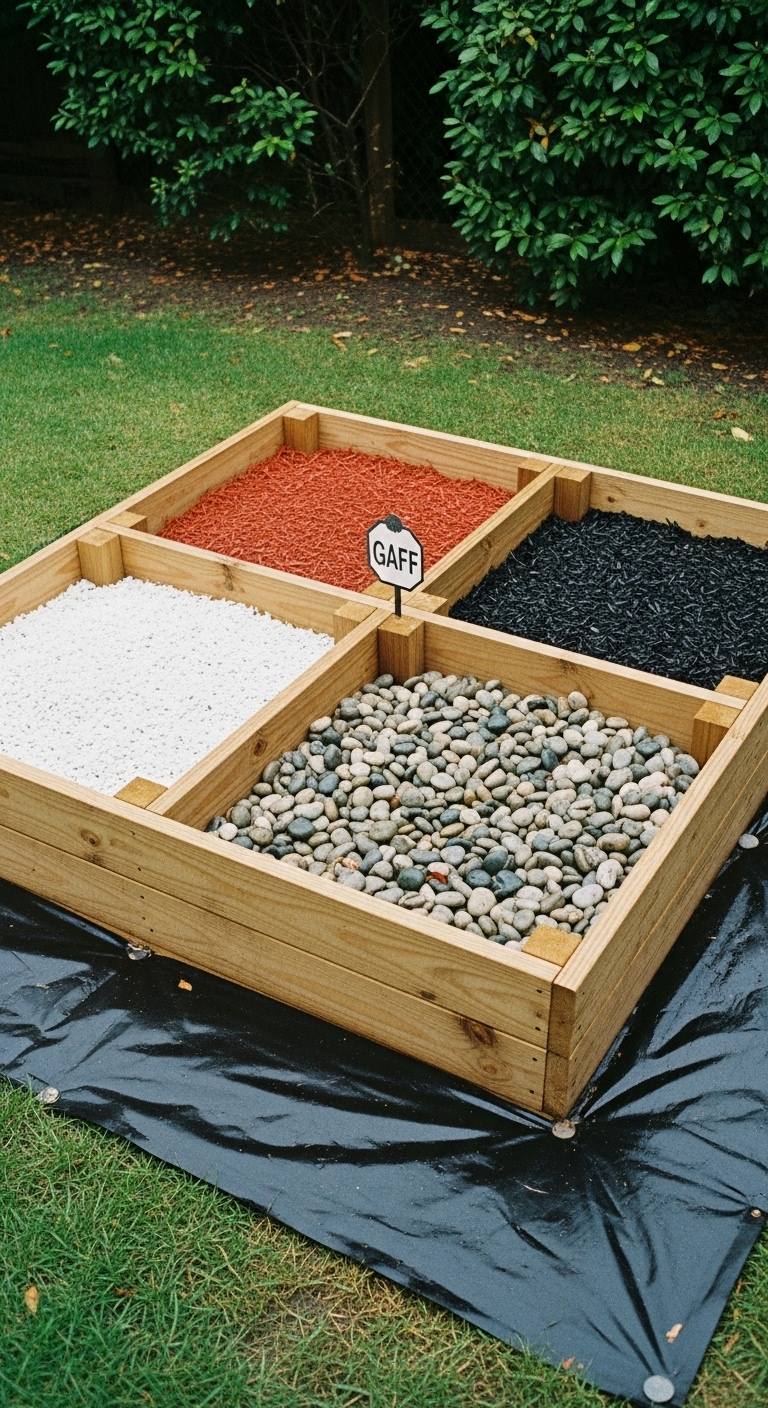
Brick parterre garden edges last forever. Lay bricks on their sides for thin borders. Stack them for taller edges. No mortar needed for low borders. Just dig a shallow trench and set them in sand.
Metal edging creates crisp lines. Steel or aluminum strips bend into curves. They also form perfect straight edges. Pound them in with a rubber mallet. They’ll outlast any plant border.
Stone offers another permanent option. Flat fieldstones stack easily. River rocks create softer edges. Even concrete blocks work when arranged thoughtfully.
Forget fussy boxwood. Try these alternatives instead. Liriope stays neat with minimal care. Mondo grass never needs trimming. Society garlic adds purple flowers. Dusty miller provides silver foliage for one season.
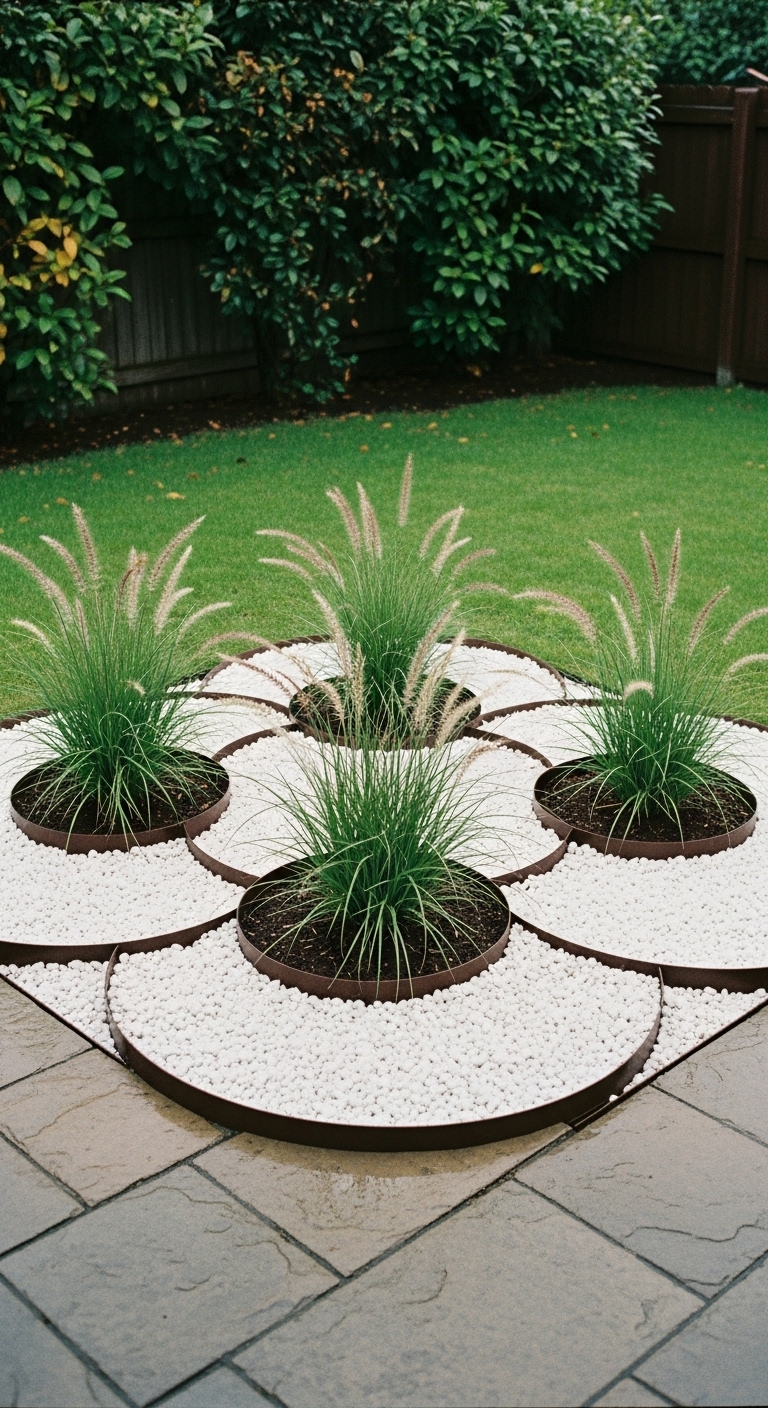
Lavender makes scented borders. Choose compact varieties like ‘Hidcote’. Space plants closely for solid edges. Or space them wider and fill gaps with mulch. Either way works.
Annual flowers offer seasonal flexibility. Plant sweet alyssum for white borders. Use ageratum for blue edges. Try marigolds for gold accents. Change colors each season if you want.
Hardscaping solves many problems. Create your entire pattern with materials instead of plants. Alternate concrete pavers with gravel squares. Use different mulch colors for contrast. Add a few pots of flowers for life.
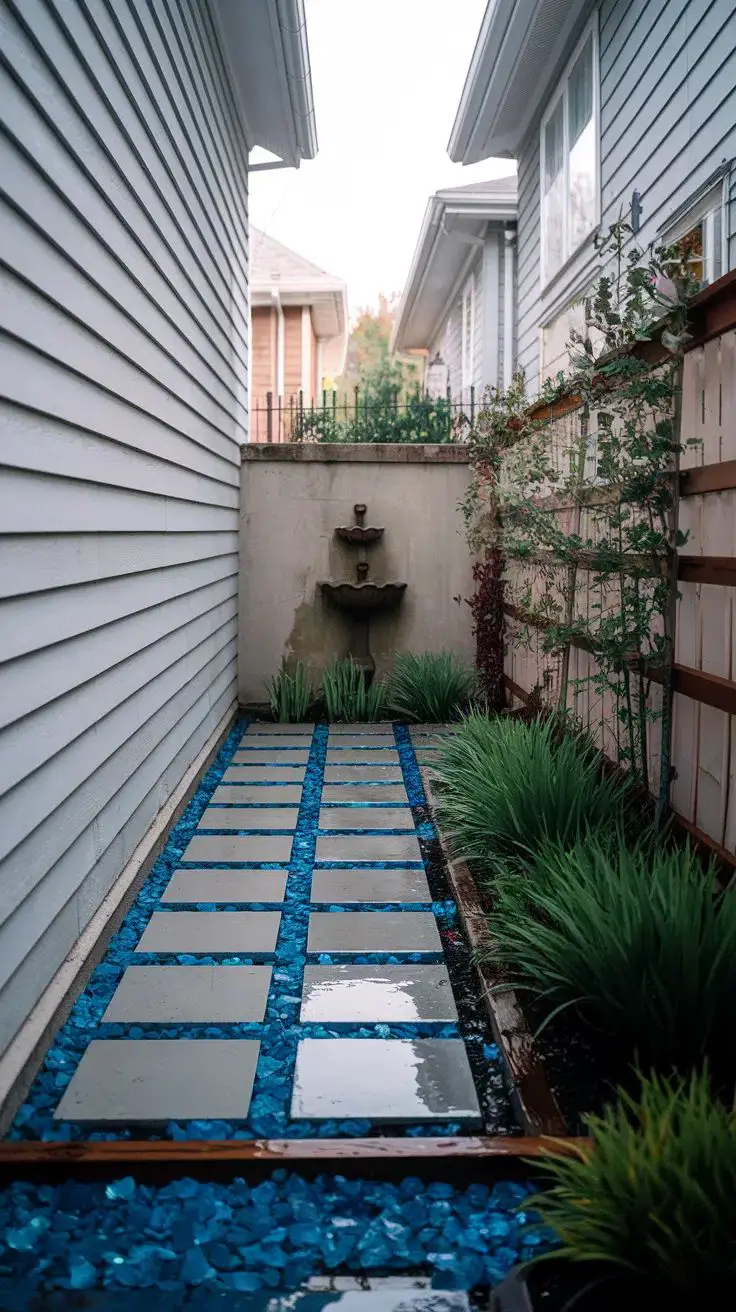
Gravel comes in many colors and sizes. Pea gravel feels soft underfoot. Decomposed granite packs firm like a path. Lava rock adds burgundy tones. White marble chips brighten shady spots.
Even fake grass has its place. Use it for perfect green squares that never need mowing. Surround with real plants if you want. Or go fully artificial for zero maintenance.
Container gardens simplify everything. Set matching pots in geometric patterns. Fill them identically. Move them around as needed. Replace dead plants easily.
Start with the simplest design possible. One square. Four matching plants. That’s it. Success with simple designs builds confidence for complex ones later.
Design Planning: From Vision to Reality
Your parterre garden design plan starts with a measuring tape. Walk your space. Write down every dimension. Note where the sun hits. Mark existing features you’ll keep. Accuracy now saves headaches later.
Graph paper becomes your best friend. Each square equals one foot. Draw your space’s outline first. Add permanent features like patios or trees. Now you’re ready to design.
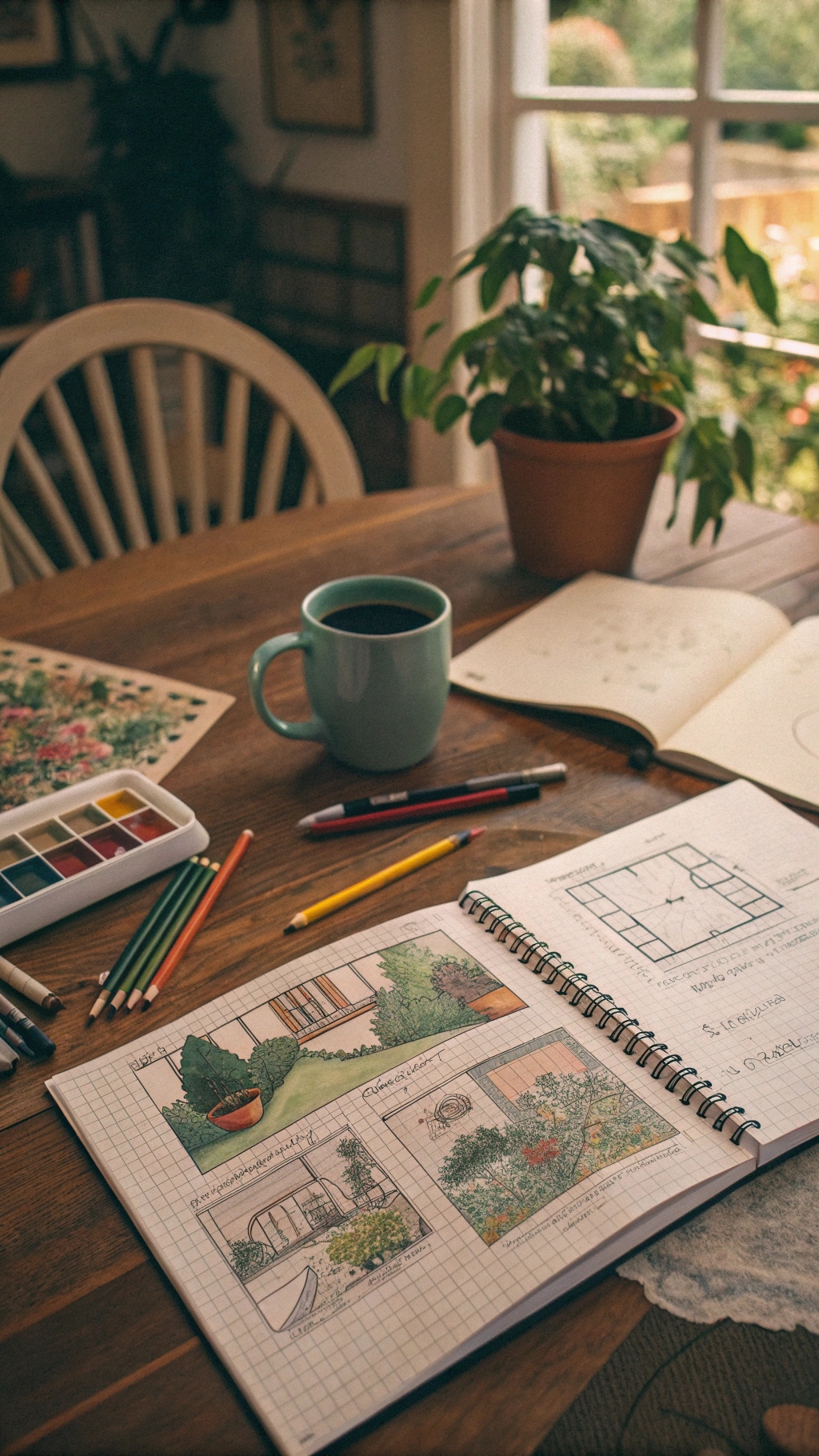
Start with major shapes. Draw squares, circles, or diamonds. Keep proportions pleasing. A 6×6 foot square looks better than 5×7. Your eye prefers even numbers and matching measurements.
Classical ratios guide good design. The golden ratio (1:1.618) appears in historic parterres. But simpler ratios work fine. Try 1:1 for squares. Or 2:3 for rectangles. Or just trust what looks right to you.
Scale matters more than size. A tiny courtyard needs tiny patterns. Large lawns can handle bold geometry. Match your design to your space. Don’t squeeze grand plans into small yards.
Parterre garden design landscaping software helps visualize ideas. Free apps let you draw basic shapes. Some show how plants grow over time. But pencil and paper work just as well. Don’t let technology slow you down.
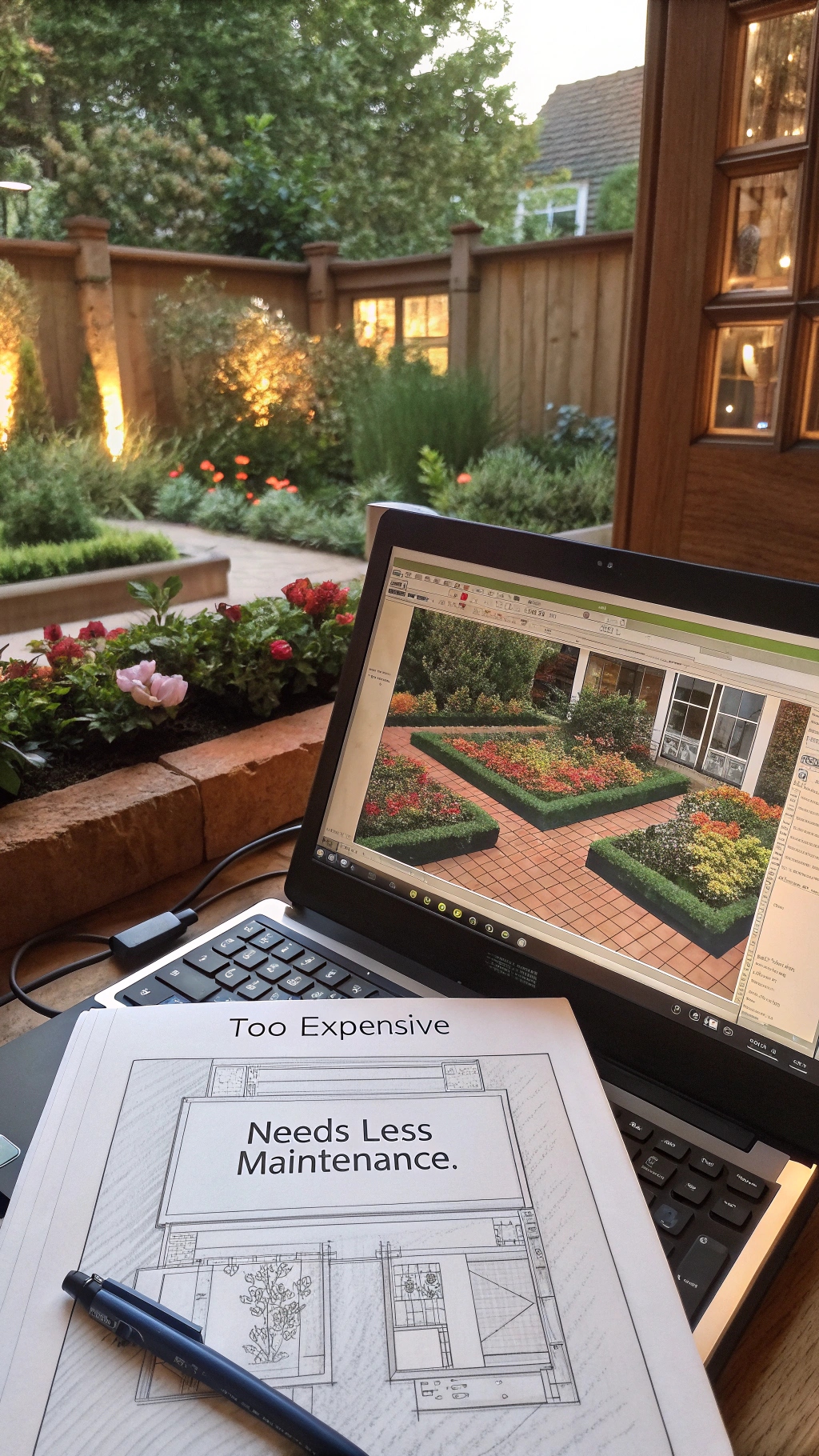
Test your design with string and stakes. Lay out shapes in your actual yard. Live with them for a few days. Walk the paths. View from windows. Adjust before you dig.
Budget shapes everything. Price materials first. Edging costs add up fast. So does gravel or mulch. Plants come last in budgeting. You can always add more later.
Phase your project if money’s tight. Install hardscaping first – edges and paths. Add plants gradually. Build one section completely before starting another. Progress motivates you to continue.
Consider maintenance honestly. Complex patterns need weekly attention. Simple designs forgive neglect. Match your ambition to your available time. Better to maintain a simple garden well than struggle with complexity.
Practical Implementation: Step-by-Step Guide
Clear your site completely first. Remove grass, weeds, and debris. Level the ground roughly. Lay landscape fabric if you’re using gravel. Skip fabric where you’ll plant directly in soil.
Mark your design on the ground. Use spray paint for straight lines. Garden hoses show curves well. Flour works too and washes away easily. Double-check measurements before digging.
Install edges before anything else. Dig trenches for brick or stone. Pound in metal edging with a mallet. Build wooden frames and level them carefully. Solid edges make everything else easier.
Paths come next. Spread your chosen material evenly. Compact gravel with a tamper. Level sand bases for pavers. Make paths slightly higher than surrounding beds for good drainage.
Amend soil in planting beds. Most plants prefer improved drainage. Add compost for nutrients. Mix in perlite for heavy clay. Good soil means healthier plants and less maintenance.
Plant from the center outward. Or from back to front. Work systematically to avoid stepping on finished areas. Space plants according to their mature size. Crowded plants never look formal.
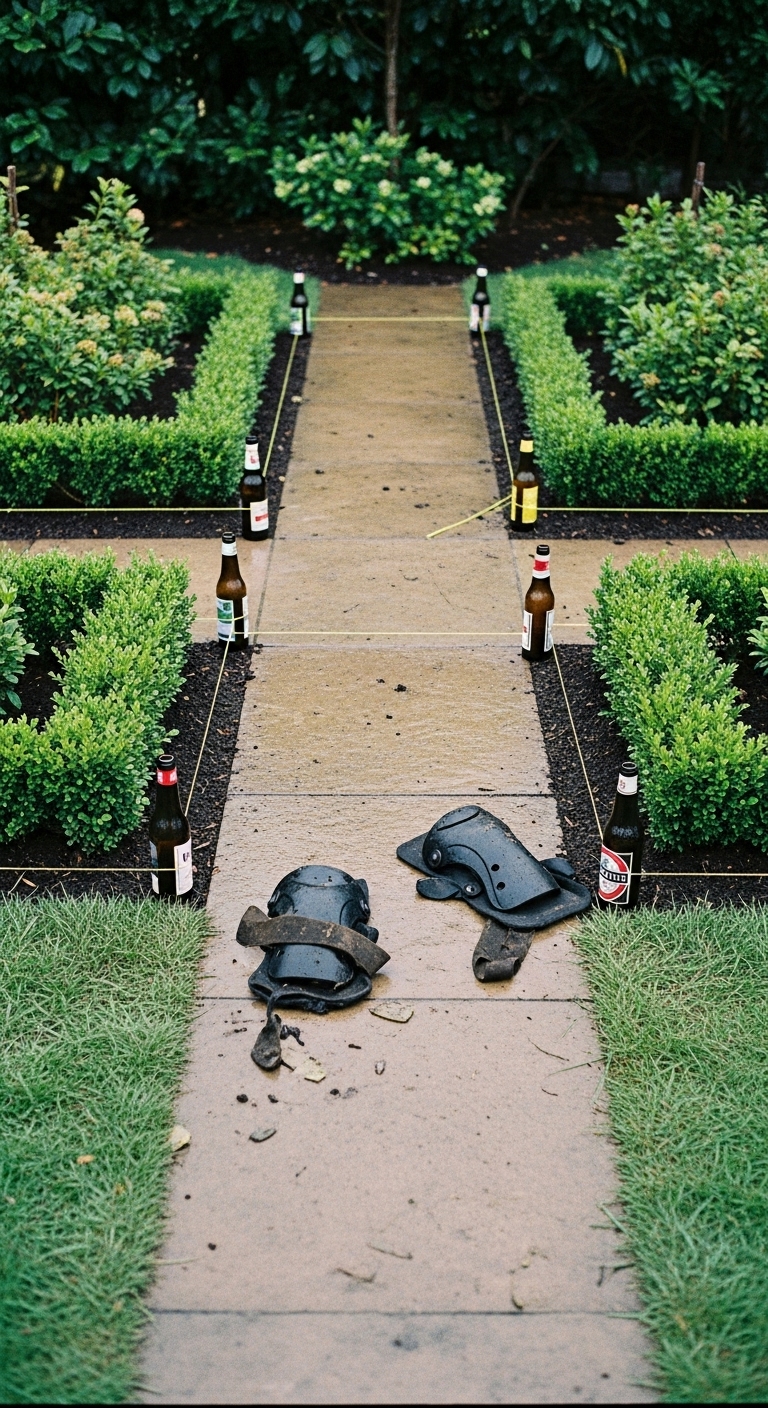
Water everything thoroughly. New plants need consistent moisture. Set up sprinklers or drip irrigation if possible. Hand watering works but takes dedication.
Mulch or add decorative stone last. Spread evenly for a finished look. Keep mulch away from plant stems. Refresh gravel paths as needed.
Parterre garden modern maintenance stays simple with planning. Trim hedges twice yearly. Deadhead flowers weekly in season. Refresh mulch annually. Rake gravel smooth monthly.
Common mistakes happen to everyone. Planting too close tops the list. Forgetting about mature plant size comes second. Skipping soil prep causes long-term problems. Making paths too narrow frustrates later.
Parterre garden bench placement needs thought. Put benches where you’ll enjoy the best view. Face them toward your favorite section. Or place them for morning sun. A bench turns a garden into a destination.
Your Personal Versailles
You’ve traveled far from those misty Versailles paths. You understand parterre principles now. You know which elements matter most. You see how modern materials honor ancient ideas.
Your yard waits for transformation. Maybe you’ll start with one simple square. Four boxwood plants and some white gravel. Or perhaps wooden edges filled with lavender. Every garden starts somewhere.
Every masterpiece begins somewhere. Your first boxwood might die. Your edges might wiggle. Your patterns might need adjusting. Keep going. Gardens forgive mistakes and reward persistence.
The satisfaction runs deep. You’ve imposed order on chaos. You’ve created lasting beauty. You’ve joined gardeners across centuries who found peace in geometric patterns.
Friends will ask how you did it. Share what you’ve learned. Help them see possibilities in their own spaces. Spread the parterre passion.
Start sketching your parterre garden layout today. Grab graph paper. Measure your space. Draw simple shapes. Dream in geometry.
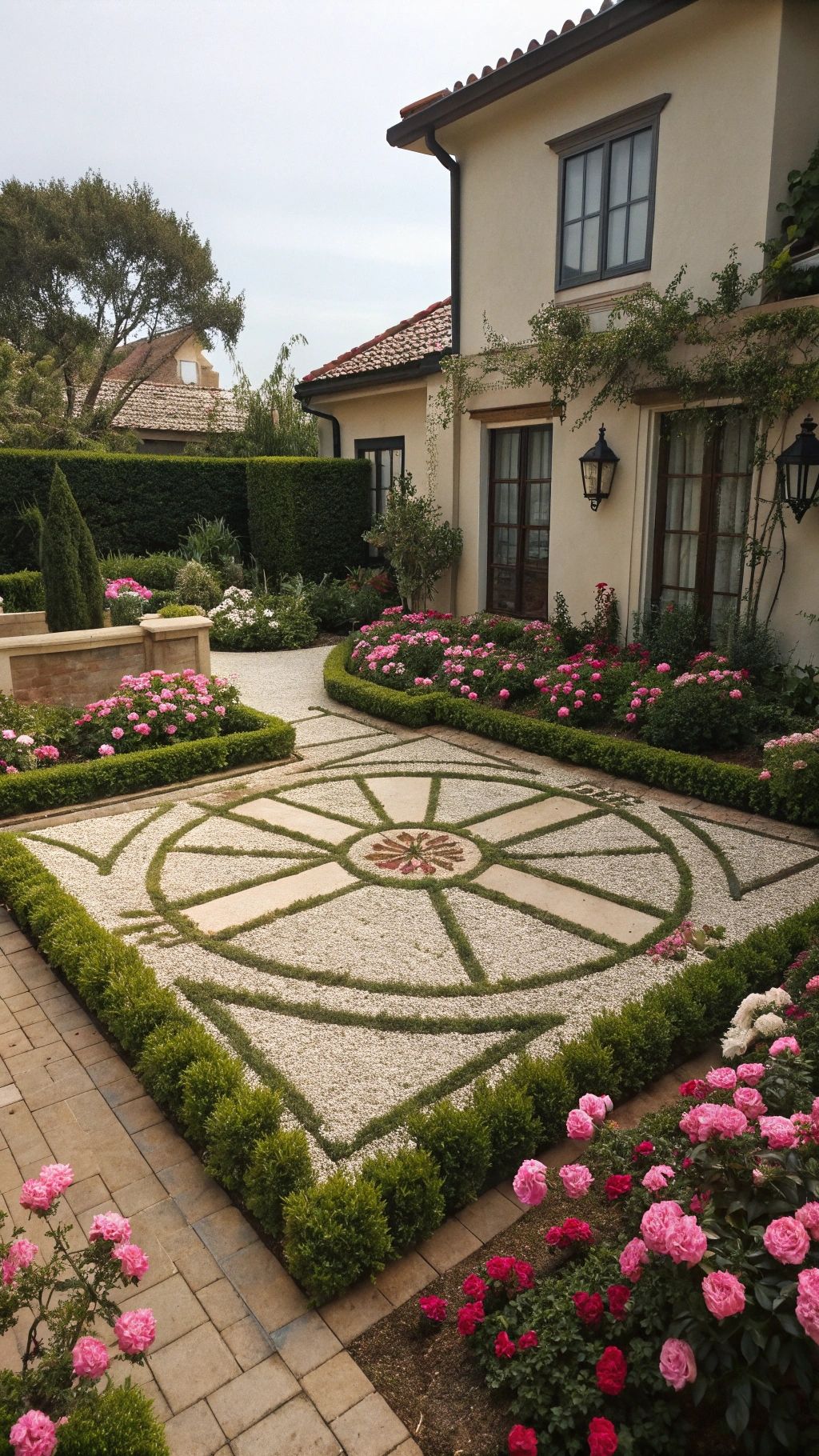
Your personal Versailles awaits. Not a perfect copy of royal gardens. But something better. A design that fits your life, your budget, your maintenance style. A parterre that brings daily joy every time you see it.
The mist will lift on your creation too. And you’ll stop. And stare. And smile at what you’ve made.
